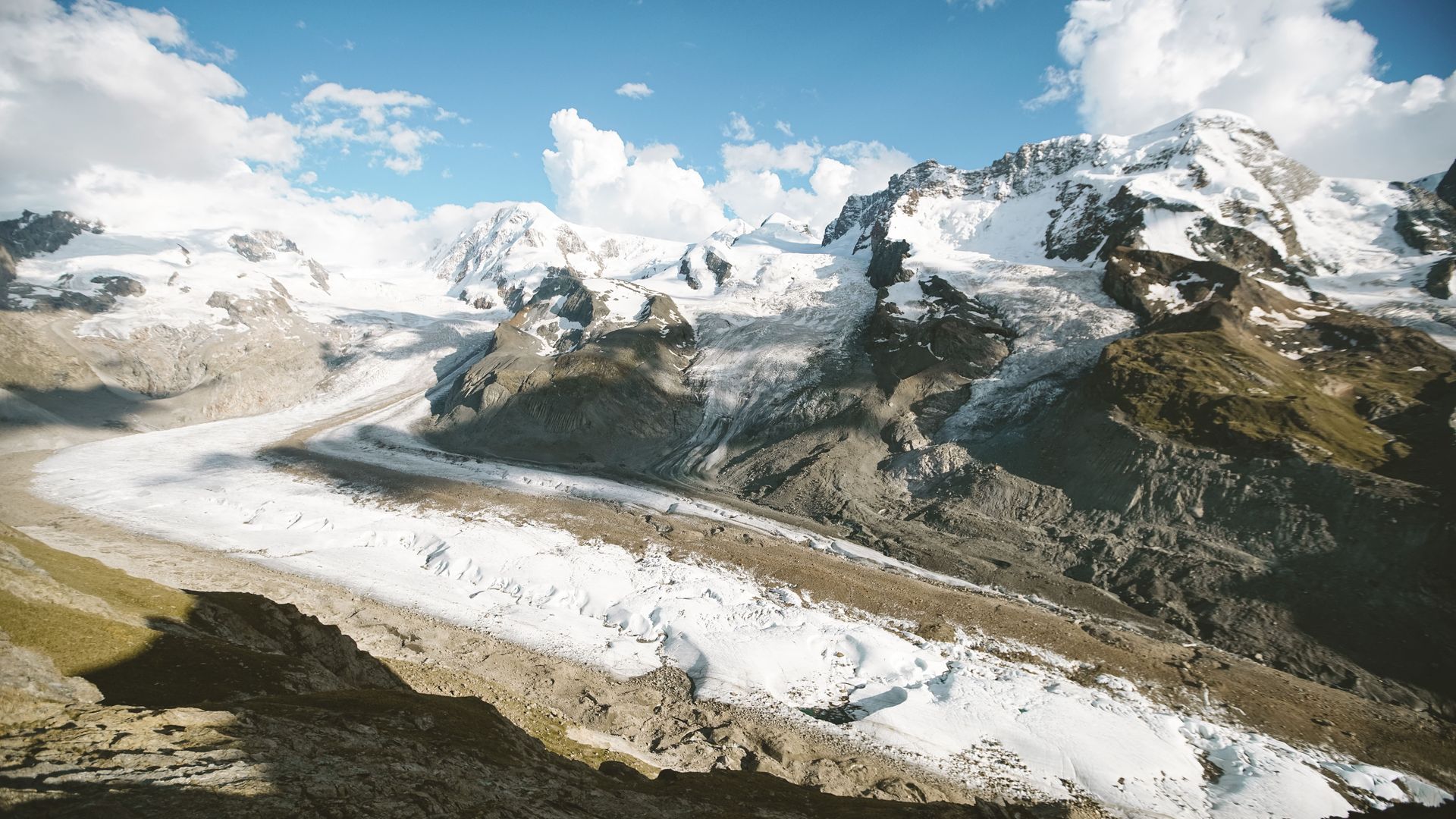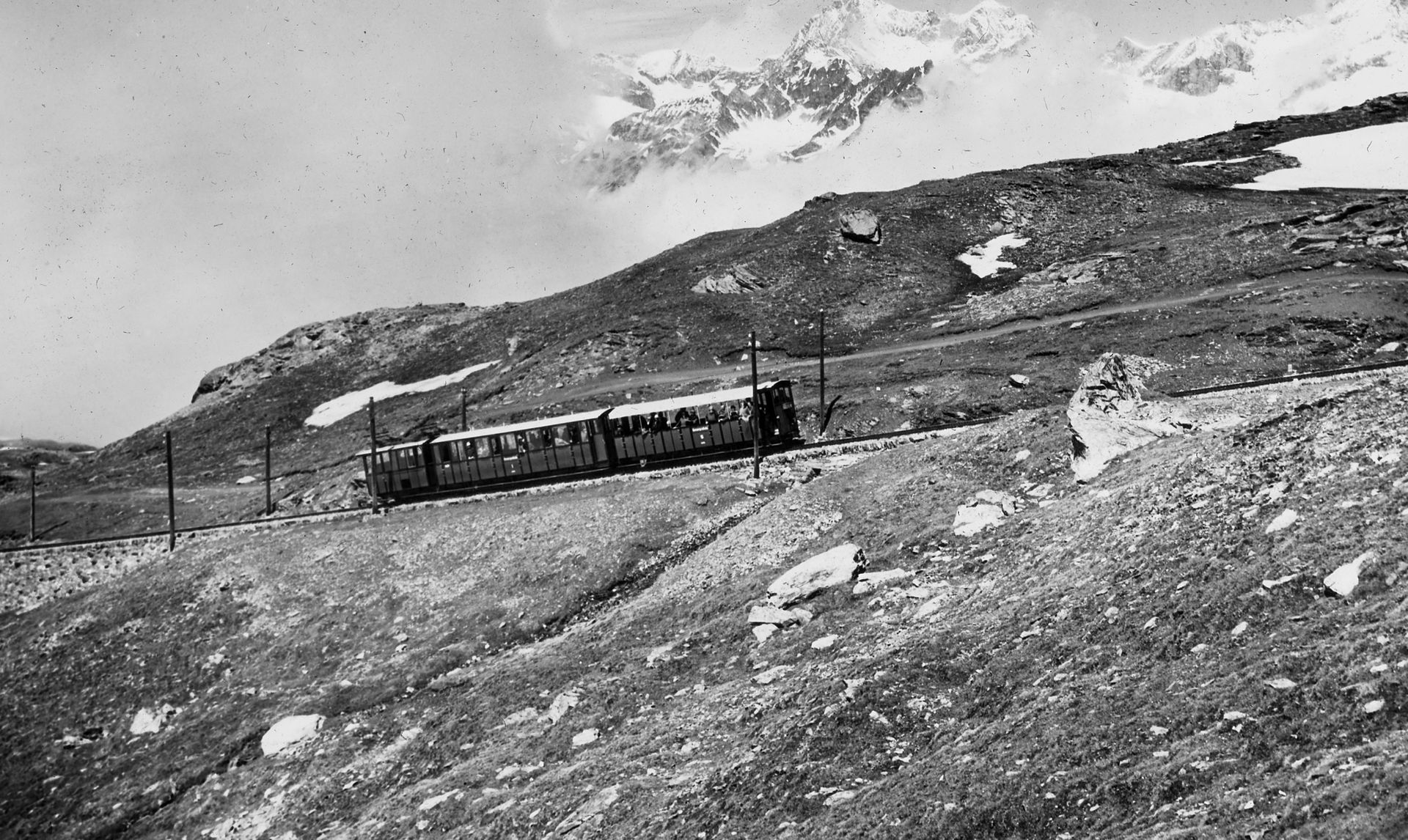The Gorner Glacier: an ice giant through the ages
Story 16
The glacier on the Gornergrat is called Majesticus. It has already fascinated many visitors with its white mass and deep crevasses that run through the ice. Today it is threatened by climate change.
Majesticus is surrounded by 29 four-thousand-metre peaks and has been flowing in the mountains on the Gornergrat for thousands of years. Thanks to its imposing presence, it has always had a great influence on people and the surrounding flora and fauna.
This is evidenced by quotes and statements from contemporary witnesses who have watched Majesticus over the centuries. In 1848, for example, the well-travelled and eminent English doctor and court physician Dr John Forbes described the panorama on the Gornergrat as “one of the most beautiful and magnificent things the whole world has to offer”.
The fight against disappearance
Unfortunately, Majesticus is now threatened by climate change. Around 170 years ago, it was an impressive 16 kilometres long and stretched almost as far as Schweigmatten. Today, it is around 12 kilometres long and its mass is steadily decreasing. Since the summer of 2019, it has no longer been connected to its neighbour, the Border Glacier.
Most people know Majesticus as the Gorner Glacier. It is a valley glacier and the third longest in the Alps. When contemporary observers look at it from the vantage point and see how the sun’s rays hit the ice and the clear, blue-green waters of the glacial lake glow, there aren’t many who realise that they, too, could help in the battle against its rival.


